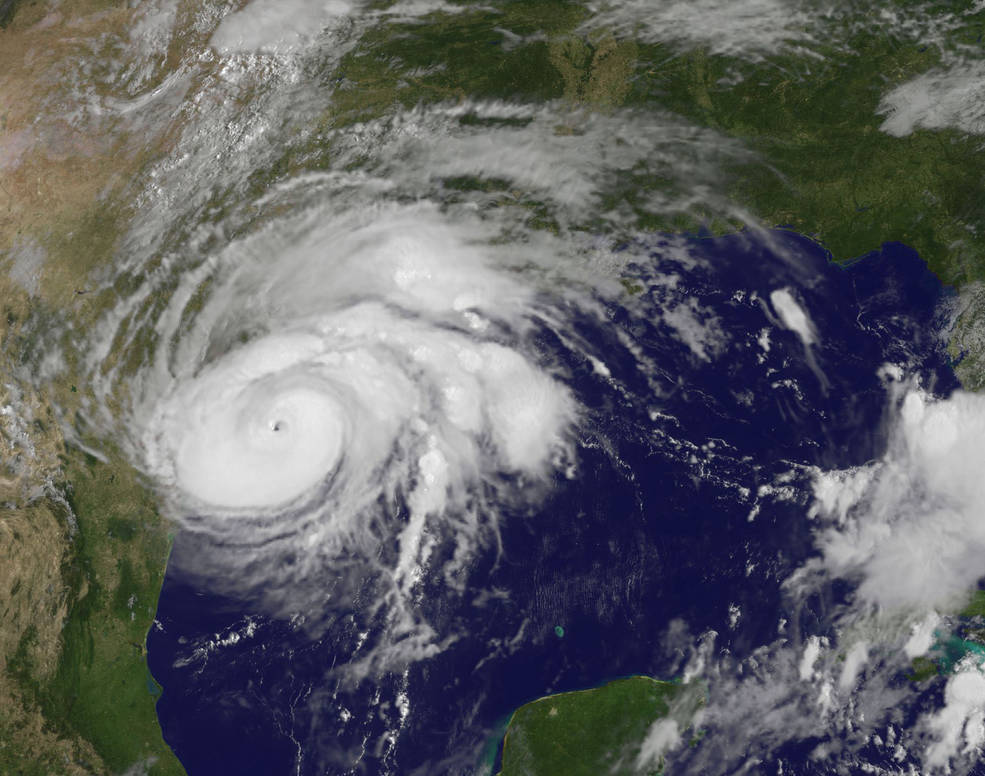Unlike the 1930s through 1950s, when longer tracked storms would hit the US near their peaks, not since Hugo in 1989 has a storm that was a major for 3 days or more out, reached the coast at peak intensity.
The list is amazing.
Let’s start with Opal 1995.
Georges had been a 4/5. made landfall as a 2/3.
Floyd weakened to a 2 from a 4.
Lily was a generous 2 from a 4 after having been called 12 hours before the worst hurricane ever to hit Louisiana.
Remember. we are saying more than 3 days out.
Ivan was off its peak.
Katrina Wilma, Rita, and Ike were all stronger 3 days out.
Irene fell apart ( it was referred to as the face of global warming when it was a 4).
Matthew and Florence, when coming from more than 3 days out, they weaken. ( Florence was speculated on as becoming a 6 instead, it reached the coast barely as a 2).
Conversely, the smaller features that are deepening within 2 days of landfall which we have been pointing out endlessly trying to make our points about all this, are a problem. As long as we keep the antiquated Saffir Simpson scale, distorted pictures using hurricanes to make points about climate change will continue. The Power and Impact scale or some form needs to be adapted, and all storms reanalyzed accordingly. It will put a stop to one-sided headlines like this:
The reason why this can be challenged and actually refuted is obvious if you look at OLR radiation rather than try to make points on climate change. OLR radiation has INCREASED relative to the 1950s in the MDR areas of the tropics. That means more sun, less clouds.
It was much less then, and precip was much higher, pressures lower, which favored the longer track monsters.
( The less OLR, the more clouds, and precip.)
Last 10 years
More OLR is due to fewer clouds over the tropics, which is not good for bigger monsters.
Precip in the 1950s
Last 10 years, opposite
SLP 1950s
Notice the low pressure over the tropical Atlantic and higher pressure to the north.
Last 10 years
If you are serious, yu see the real climate metric is not pushing stronger hurricanes, for it’s plain to see the reasons the long-tracked monsters aren’t as common. It is trying to get serious and ascertain what the effect of large-scale changes in the Pressure and wind patterns are doing, Monster hurricanes are not growing bigger. The last monster hurricane really on a par with 1938 or 1944’s Donna Carla or Betsy arriving on the US coast, was Hugo., But when we are talking about the storms, they are smaller as far as the overall size. 135 mph with Charley is not the same as Donna except at the very center. Ian was termed a monster but was half the storm Donna was in total impact. Donna was stronger and larger in Florida and the Carolinas and hit New England also.
But the average ace/storm in the 1950s was over 10; this last decade under 8. More minor storms are identified, but monsters hitting the US are not Fists of fury, with the problem of rapid feedback, which anyone who has followed me for the last 10 years knows about.
So that headline above is really one-sided for one and for two because the climate agenda that only looks at one thing at the surface to grab headlines actually stops us from looking at the other global implications of the distorted warming. Here is a freak stat: after being hit by 1 hurricane every 6.7 years from 1938-1991, Long Island and New England have not had a landfalling hurricane in 32 years, an extreme all right, but to the other side of the issue.
The very fact that pressures are higher, there is more OLR now and precip is lower, means that there are not the monsters there used to be. That idea can’t be right because of such a dramatic change. In close, compact systems are not the same as far as the overall power of the storm and what it is saying about the environment that produces it. That should be obvious from what you see above.
But as long as you are not looking and keeping the Saffir Simpson scale, which, btw was good, but because of the points people interested in pushing an agenda are using it for, it is now out of date ( see the climate change agenda is forcing us to get more descriptive). Then you will get this.
All of you know what would break loose if these things I am showing were the headline, but this simply would not be acceptable in proper circles today ( haha).

.png)





